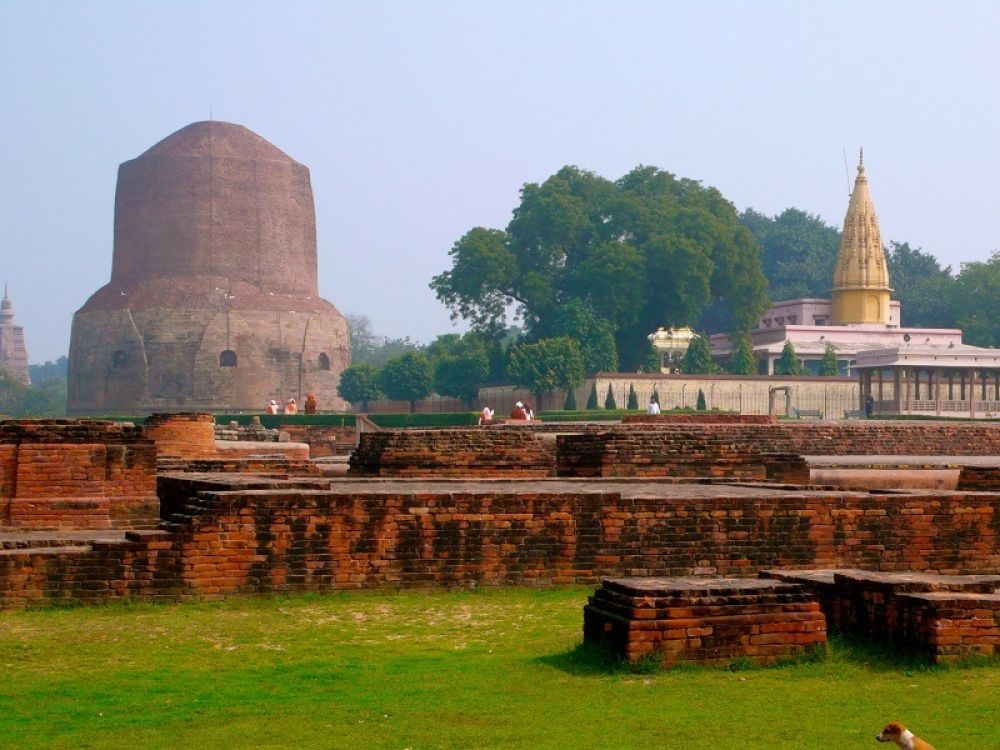

Sarnath, located near the confluence of the Ganges and the Varuna rivers in Uttar Pradesh, India, is a site of immense historical and spiritual significance. It is renowned as the place where Lord Buddha delivered his first sermon after attaining enlightenment in Bodh Gaya. This momentous event marked the founding of the Buddhist religion and the revelation of the principles of Dharma.
The history of tourism in Sarnath dates back to ancient times when it was known as Isipatana. It has been a pilgrimage destination since the time Ashoka the Great, who embraced Buddhism, erected magnificent stupas and pillars here in the 3rd century BCE. Over centuries, Sarnath became a flourishing center of art, culture, and education, attracting monks and scholars from across Asia until the 12th century when it suffered destruction at the hands of foreign invaders.
It wasn't until the 19th century that Sarnath regained attention. British archaeologists commenced excavations and restoration efforts, uncovering artefacts, monasteries, and the Dhamek Stupa – one of Sarnath's most iconic structures. With these discoveries, Sarnath gradually re-emerged as a significant Buddhist pilgrimage site, inviting visitors from around the globe seeking spiritual insights and historical exploration.
Modern tourism in Sarnath has preserved its spiritual past while incorporating contemporary conveniences and attractions. Tourists can now explore rich museums, such as the Sarnath Archaeological Museum, which houses an extensive collection of sculptures and artefacts from the ancient city. The Chaukhandi Stupa marks the spot where Buddha met his first disciples, and the Ashoka Pillar at Sarnath is emblematic of the Emperor's conversion to Buddhism.
Buddhist Festivals like Buddha Purnima are celebrated with great reverence, drawing crowds who immerse themselves in the religious and cultural festivities. Buddhist teachings and meditation sessions are regularly organized, maintaining a spiritual environment that resonates with the seekers of peace and enlightenment.
The latest trends observed in Sarnath revolve around sustainable and experiential tourism. Visitors are increasingly looking for authentic experiences that allow for personal growth, learning, and a connection with the local community. Activities like village tours, traditional handicraft shopping, and culinary experiences with local delicacies have become quite popular.
Digital innovation has also begun to take root, with virtual tours and augmented reality experiences providing a glimpse into the majestic past of Sarnath. They serve as a prelude to what tourists can expect when they visit this sacred town.
In essence, Sarnath continues to be a destination where history, spirituality, and modernity meet, offering a unique experience to each visitor. Whether you are seeking solace, interested in the history of Buddhism, or looking for a culturally rich travel experience, Sarnath offers a profound journey into India’s ancient legacy and living traditions. Its tourism sector, ever-evolving, stays true to its roots, continually attracting and enchanting visitors from every corner of the world.
If you wish to plan a trip to Sarnath, the best time to visit is from November to March when the weather is mild and conducive to exploration. Varanasi Airport is the nearest airport, and there are ample accommodations ranging from guesthouses to luxury hotels to cater to the needs of international and domestic travelers alike.
Guided Tours are highly recommended for their informative narratives that bring ancient history to life and provide deep insights into the significance of each site within Sarnath. Whether you are a history enthusiast or a spiritual seeker, Sarnath's layered charm is certain to captivate and inspire you.